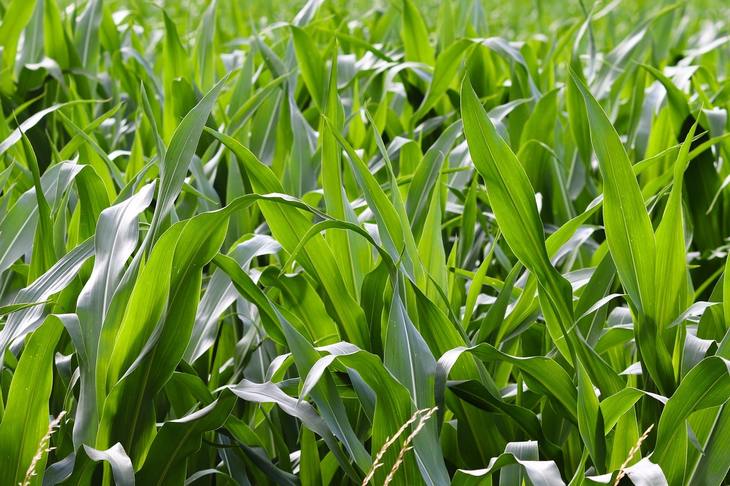With rain, Brazil starts the summer planting of corn

With rain, Brazil starts the summer planting of corn. The domestic market continues with slow commercialization on the growers’ side, still believing in variables that can cause prices to soar even with the US harvest only starting next month. Faced with a year with many events, producers remain with a positive view of markets and are slowing down their sales in line with everyday prices. The great volume of shipments scheduled for August through Brazil, which could set a new record, is a good sign that exports are progressing well and already reflecting the European crop failure on Brazilian sales. The period from October to January will be essential to confirm a volume greater or not than 37 million tons, there is global demand for this, and the sales flow by producers will be key to the result. Meanwhile, the rain in southern Brazil has reached more than 200 mm in August and allows the beginning of the planting of the corn summer crop and, from mid-September, the planting of soybeans. These are two important advances for the design of the 22/23 crop and prices.
The Brazilian market is looking for a variable that can contribute to price highs in the second half of the year. A decline in foreign production, exchange rate volatility with the elections, a weather factor in the summer crop, or even assumptions about Chinese imports of Brazilian corn are arguments used today in the market to justify slower trading in wait for better prices. Nothing unusual for an uncertain year and with too varying variables.
In this environment, corn commercialization continues with consumers still needing to assume high transport costs that do not allow better corn prices for producers. Trading companies continue at their always frenetic business pace, especially on days of highs on the CBOT combined with a more devalued exchange rate. The week maintained port levels between BRL 87/90 for September and October shipments, and there is demand for Brazilian corn until January. The point is that Argentina is still selling, thus competing with Brazil. In any case, Brazilian premiums are still very good, above 120 cents against Chicago and enabling balanced prices at ports.
The Brazilian line-up shows scheduled shipments of 8 million tons in August and almost 2 million tons in September. This year’s exports thus far amount to 20 million tons, and we must reach September with nearly 24/25 million. From then on, there will be four months of shipments left to reach 37 million tons or more over the year. For that, shipments from October to January will need to make a monthly average of around 3.5 million tons. It is not an easy average, but clearly possible in the face of international conditions. Of course, to achieve some market estimates above 40 million tons, we would need to keep monthly shipments far above 5 million tons.
Without sales by the producers, exports by trading companies do not advance, and Brazil may have difficulties in reaching very significant numbers. Therefore, it is important to assess that we will have two important periods ahead. The first is the maturation of debts of producers on September 30ç; the second is the need to free up warehouses until the entry of 2023 for the soybean crop. At the same time, the definitions of foreign production, mainly the US one, as well as the Brazilian electoral definition, will be important for this arrangement in the flow of exports.
While all this market movement continues, in September we will have the entry of a new ingredient, the planting in South America. The first point of this picture is that the rain in the south of Brazil, Mato Grosso do Sul, and São Paulo arrived early and in large volumes, preparing favorable soil moisture for the advance of planting. The Missões region, in Rio Grande do Sul, and Santa Catarina have already advanced the planting, some as early as the end of July, but the vast majority of the planting must advance from this week. The rain was also very beneficial for wheat, which must show a good crop in the second half of the year.
The rain was very favorable in Paraguay too. From the end of August, the soybean planting must advance in the country and suggest an early harvest in 2023, as well as a second corn crop planting also in an excellent window. The Brazilian agricultural zoning does not allow for this early planting of soybeans, and as of September 12 we must register the advance of planting.
Of course, the August rain was very welcomed, however, we must consider that we are proceeding with the third summer crop under the climatic environment of La Nina or neutral climate. Therefore, strong attention must be paid to the development of the Brazilian summer crop, as this could reset the international price bias, especially if September shows a dry period again in the regions of premature planting.
Read also
Wheat in Southern Brazil Impacted by Dry Weather and Frosts
Oilseed Industry. Leaders and Strategies in the Times of a Great Change
Black Sea & Danube Region: Oilseed and Vegoil Markets Within Ongoing Transfor...
Serbia. The drought will cause extremely high losses for farmers this year
2023/24 Safrinha Corn in Brazil 91% Harvested
Write to us
Our manager will contact you soon



